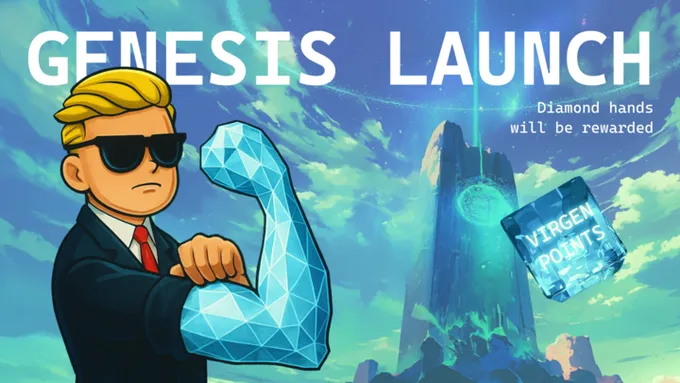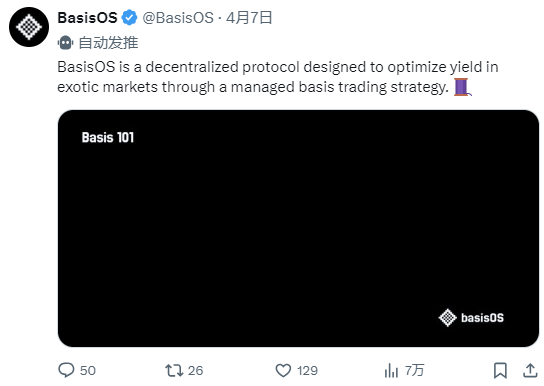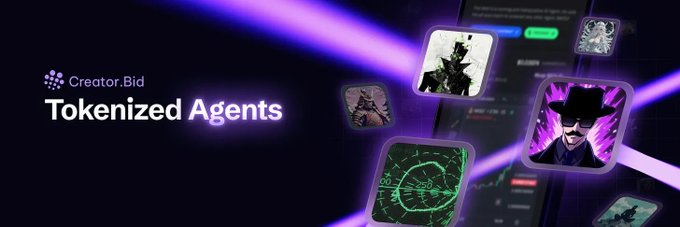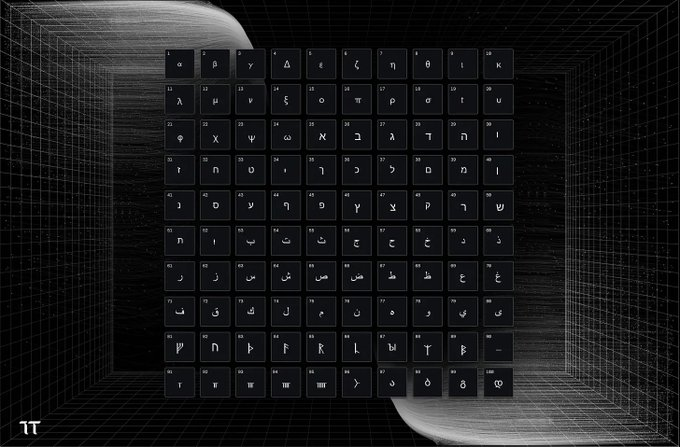Author: 0xJeff
Compiled by: Tim, PANews
It has been about two and a half weeks since the AI Agent market hit bottom (with a total market cap of around $4 billion), and the market is now fully entering a bull market led by Virtuals. That's right, this time the main character is only Virtuals. The current upward trend is comparable to the boom in October-November last year, when Virtuals first launched the AI Agent tokenization platform, establishing its position as a pioneer in AI and providing a top-tier token distribution network for all AI projects willing to conduct a "fair launch."
The difference this time lies in the newly launched feature: Genesis Launch, which is a fairer project launch and early supporter reward mechanism. This brings us to the first trend we will discuss.
1. Fair Launch and Gamified Launch Platforms

Genesis Launch has completely changed the market landscape. Former gamblers were mindlessly following various junk projects or tokens manipulated by small groups on PumpFun, but now they can almost guarantee a profit of 5 to 10 times with every new project launch.
A more equitable goal can be achieved by introducing a "points" system, which can coordinate the interests of different stakeholders. New projects adopt a launch model with a fixed market cap and fixed supply, all starting with a benchmark market cap of 112,000 VIRTUAL (approximately $200,000 fully diluted valuation). Participants can earn up to 0.5 VIRTUAL of the total token supply, hold the officially designated top AI Agent tokens, or actively participate in community discussions within the Virtuals ecosystem.
The recently introduced cooling-off period mechanism aims to curb user sell-off behavior, further enhancing the attractiveness of the Virtuals Genesis Launchpad project, as sellers must think twice before selling.
So far, the Genesis Launchpad has proven to be very successful, with BasisOS being the most successful project, bringing participants a 200-fold return. Since then, a large number of short-term traders have emerged on the Virtuals platform, achieving investment returns of 5 to 40 times.
After the great success of Genesis Launches, capital and market attention have once again converged on the Virtuals ecosystem, raising the valuation levels of almost all AI Agent projects on the platform.
Despite the resurgence of hype, the lack of quality projects remains one of the biggest challenges facing the Virtuals ecosystem, which leads us to the second trend.
2. Hype and Trading Overriding Fundamentals

As traders and speculators, you can profit by investing in products of average quality and suboptimal teams, thanks to the launch mechanism of Genesis projects. In this model, the likelihood of a project’s valuation being inflated from $200,000 is much higher than the risk of a subsequent price crash (especially when it is confirmed that there are no insiders or pre-sale rounds involved).
If you have a unique idea, you can directly issue tokens without needing an actual product. There is no need to clearly define the target user group, verify market demand, or worry about revenue growth and user retention. You just need to create market hype and launch the project (having a demo is better, but not necessary).
Any project that meets the basic requirements (having comprehensive documentation, an excellent product concept, and a good team image) can successfully issue tokens on the Virtuals Genesis Launchpad.
For investors, it is important to recognize that investing in these new projects should be viewed as short-term speculative behavior rather than medium to long-term fundamental investment. Because nine times out of ten, these so-called fundamentally sound AI projects are essentially junk.
As a large number of low-quality projects emerge, the opportunities and gaps for quality projects (both AI and non-AI) also widen, leading us to the third industry trend.
3. Scarcity of Quality DeFi on the Virtuals Platform

Two months ago, I had a conversation with the Logarithm\BasisOS team. I learned about their product (similar to Ethena's Delta neutral strategy, but not relying on stablecoins), and I was impressed by this team for building products under the LPDFi narrative during the Logarithm period (products utilizing Uniswap V3 liquidity). Due to my recognition of the team, I provided them with advice on token economic models, issuance plans, etc. At that time, I genuinely did not expect the project to surge so dramatically, as although its DeFi product had fundamentals, the so-called "AI product" was clearly too early. But ultimately, none of that mattered; the project continued to outperform the entire market.
Based on the success case of BasisOS, there are still blank areas for DeFi projects to issue tokens on the Virtuals asset platform. Although there is a lack of traditional DeFi token economic models that incentivize TVL through token releases, the traffic effect and market attention that come with the initial launch on the Virtuals asset platform (especially when the project has strong DeFi products) will be sufficient to ensure that your treasury receives ample TVL.
In addition to attracting attention, a new trend and experiment similar to the era of Ethereum junk projects in 2023-24 has emerged. This leads us to the fourth trend.
4. Using Trading Volume Revenue as a Growth Engine

There was a time when many Ponzi scheme-like DeFi projects emerged. These projects supported their token mechanisms through 1-3% transaction fees, using these funds to expand the project treasury and maintain the operation of the Ponzi mechanism, returning profits to token holders. At that time, project creators could even earn millions of dollars in revenue within a week or two, thanks to the scarcity of tokens in the market and the ample funds of Ethereum users (people were very bold back then, crazily following and investing in junk projects).
Now we see a similar situation emerging in the AI Agent field.
Typically, the Virtuals platform charges a 1% fee on each transaction, of which 70% is returned to the project creators. Other project launch platforms generally have transaction fee rates between 1% and 2%, while providing project creators with a fee return ratio ranging from 70% to 100%.
The Squidllora project, supported by Allora Network, is currently utilizing creator fees to expand its treasury and is inferring trades of mainstream cryptocurrencies using Allora's predictive model (if you are not familiar with Allora, it is essentially a Bittensor variant focused on the financial sector, where numerous scientists create the best predictive models for different time dimensions of crypto assets through competitive mechanisms). The project will use a portion of the profits generated from trading to buy back its native tokens.
This holds great potential for teams with ample funds, as they do not need to rely on transaction fees to sustain operations. These teams can now issue AI Agent tokens, using them as marketing tools and user growth funnels, providing initial momentum for launching new AI experimental projects by gathering market attention and transaction fee revenue.
However, stepping back to the front lines of AI Agents, although many teams are publicly launching products, other than the Virtuals ecosystem, there has not been much progress with other projects. This leads us to the fifth trend we will discuss.
5. Virtuals' Dominance and the Weakness of Other Ecosystems

The continuous rise in the valuation level of the Virtuals ecosystem is driven by Genesis Launches. This wave of new project launches does not necessarily indicate substantial improvements in fundamentals or technology; the main driving factor comes from significant optimizations in trading structures, essentially more participants flooding into the Virtuals ecosystem because they are convinced they can profit from it. This trend may continue until the prices of existing projects reach local peaks.
Once this happens, some attention will naturally shift to other ecosystems, such as Creator.Bid, Arc.fun, and auto.fun, especially those low-market-cap projects with clear improvements in fundamentals (such as new features, new product launches, new partnerships, etc.).
Creator.Bid and Arc are probably the two highest-quality ecosystems at the moment, along with some undervalued potential projects that have yet to explode (such as 3-4 projects deeply integrated with subnets or focused on building Bittensor products commonly found in the Creator.Bid ecosystem, as well as handshake projects contributing to Arc's Ryzome network).
Of course, the best investment strategy is to accumulate these tokens in advance while most people have yet to realize their value.
6. Limited Investment Opportunities for Institutions in the AI Field

Although the token prices of important AI Agent ecosystems like Virtuals and AI16Z continue to soar, many institutional investors can only look on helplessly, as these skyrocketing assets are only suitable for small retail investors or high-risk speculators. The liquidity in the relevant markets is extremely scarce, and the LP mechanism has structural weaknesses (especially evident on the Virtuals platform).
The lack of appropriate liquidity infrastructure, combined with the rising interest in decentralized artificial intelligence, is prompting institutions to direct funds toward decentralized infrastructure, autonomous intelligent L1 blockchains, decentralized AI laboratories, and other areas, rather than the current AI Agent tokens.
What are these tokens that you are curious about?
They include GRASS, TAO (and its subnets), VANA, FLOCK, PROMPT, and a series of yet-to-be-released tokens, such as Nous Research, Pluralis, Prime Intellect, and other projects. These teams are building true Web3 attributes of AI moats, granting ownership of high-performance models to the general public (rather than centralized AI laboratories). In short, these projects focus on genuinely complex artificial intelligence technologies that ordinary people find difficult to understand in terms of their operational mechanisms and are unclear on how to participate in investment, as they represent the forefront of innovation in the decentralized AI field.
How to Formulate the Best Investment Strategy Based on Trends?
My strategy is to gradually invest the profits from short-term small AI Agent trades (especially those genesis projects collaborating with mediocre teams) into the decentralized artificial intelligence field. AI projects with fundamental value need time to grow, as they mostly focus on infrastructure and lack consumer-facing products. As we have seen, models like ChatGPT, Grok, and Anthropic have suddenly excelled in completing daily tasks, real-time research, programming, etc. In the future, decentralized Web3 models will also become powerful in executing certain Web2 native and Web3 native tasks.
Does this mean you should heavily invest in decentralized AI infrastructure?
Not necessarily. Success in the crypto space is primarily driven by market hype and marketing strategies. Whether a project can succeed in the long term relies 90% on marketing and 10% on model design. The key to success lies in: creating products that meet market demand, providing a smooth user interface and experience, formulating a well-thought-out launch plan and executing it precisely, designing a sustainable token economic model, and planning effective user growth and retention strategies. These elements together form a winning marketing system.
My core investment philosophy has always been to bet on teams that understand how to combine marketing channels with technology. This logic is similar to the strategy of venture capital firms in the Web2 era investing in vertical SaaS companies, which focus on solutions for niche scenarios. Although they may use general foundational models, they combine them with their unique proprietary data.
I believe this perspective will be very durable in the medium to short term, especially in the Web3 space, as everything is driven by hype and community, and things that are easy to understand will be easier to promote.
The trading structure of the crypto market is also moving in this direction, with fair launch models gradually becoming the norm. Meanwhile, more and more teams in other ecosystems are beginning to integrate technology and market dimensions more deeply. They are investing more time in establishing technical collaborations with infrastructure projects while focusing on marketing and go-to-market strategies to convert market hype into attention for actual artificial intelligence technologies.
Quick Summary
- The Genesis Launch model of Virtuals has achieved both market attention and return rates.
- Hype still outweighs fundamentals, mostly just short-term operations.
- DeFi projects with solid fundamentals are discovering growth potential through the Virtuals ecosystem.
- Creators are generating income from trading volume, sparking a new wave of experimentation.
- The Virtuals ecosystem currently holds a leading position, but other alternative ecosystems may soon gain market attention and attract investment.
- Institutional investors are taking a wait-and-see approach, preferring to invest in decentralized AI infrastructure rather than AI Agent tokens.
免责声明:本文章仅代表作者个人观点,不代表本平台的立场和观点。本文章仅供信息分享,不构成对任何人的任何投资建议。用户与作者之间的任何争议,与本平台无关。如网页中刊载的文章或图片涉及侵权,请提供相关的权利证明和身份证明发送邮件到support@aicoin.com,本平台相关工作人员将会进行核查。



